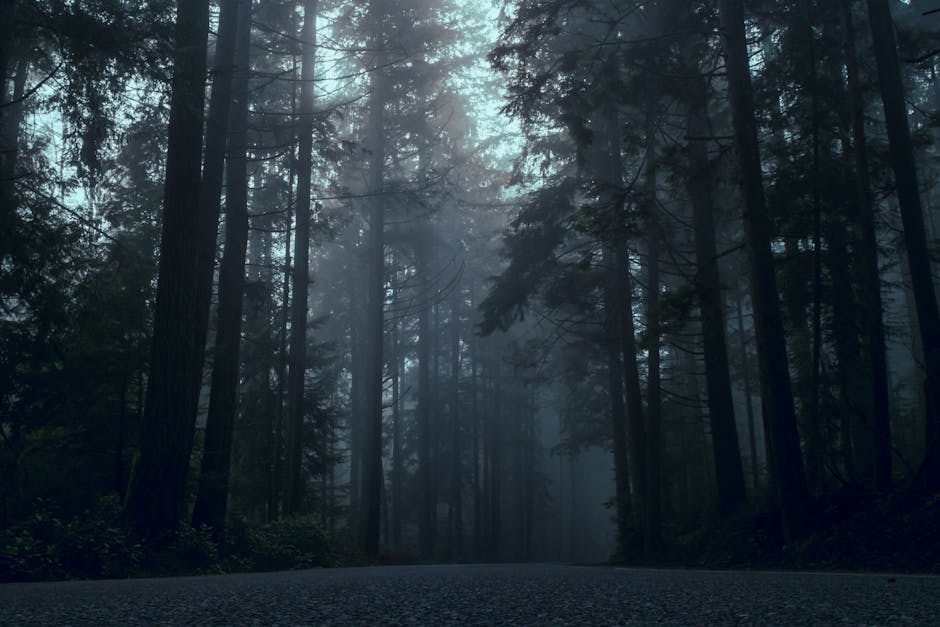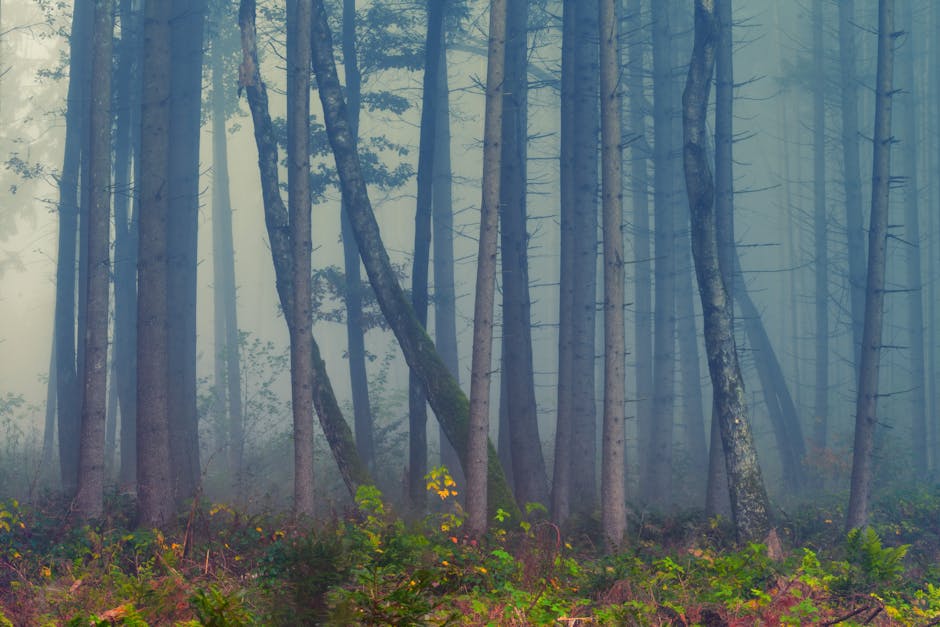Exploring the Enchanted Forests of Hoh Rain Forest, Washington
The Hoh Rain Forest in Washington is one of the most enchanting natural wonders in the United States. Nestled within Olympic National Park, this lush, temperate rainforest stands as a living testament to the power of nature. Its moss-draped trees, verdant ferns, and misty ambiance give it a magical quality that feels almost otherworldly. The forest’s unique ecosystem supports a diverse range of plant and animal species, making it an excellent destination for nature lovers and outdoor enthusiasts alike.

The Uniqueness of Hoh Rain Forest
What makes the Hoh Rain Forest truly remarkable is its status as one of the few remaining temperate rainforests in the world. Receiving an average of 140 to 170 inches (3.5 to 4.3 meters) of rainfall each year, the forest remains lush and green throughout the seasons. The constant moisture feeds a vast array of plant life, from towering Sitka spruce and western hemlocks to vibrant mosses and ferns that blanket nearly every surface.
One of the standout features is the presence of "epiphytes," or plants that grow on other plants without harming them. Mosses and lichens cling to branches, creating an ethereal canopy that filters light in soft hues of green. This phenomenon gives visitors a sense of being in a place where time moves slowly, where growth and decay are in constant balance.
The Hoh River, which runs through the forest, plays a critical role in shaping its landscape. Fed by glaciers from Mount Olympus, this river meanders through ancient groves, cutting across valleys and contributing to the rich alluvial soil that sustains the forest's biodiversity.
Wildlife You Might Encounter
The Hoh Rain Forest isn’t just about trees and plants; it’s home to a wide array of wildlife that thrives in this moist environment. The thick foliage and abundant water sources make it ideal for many species to flourish. Common sightings include Roosevelt elk, black bears, and river otters along with smaller creatures such as chipmunks and squirrels.
Birdwatchers will find plenty to marvel at as well. Bald eagles soar above the tree canopy while smaller birds like warblers flit among branches. The varied terrain (from riverbanks to dense undergrowth) provides shelter for many species that would be hard to spot elsewhere.
- Roosevelt elk: Often seen grazing in clearings or near rivers.
- Black bears: More elusive but present throughout the forest.
- Bald eagles: Frequently spotted along rivers hunting for fish.
- Pacific tree frogs: Their distinctive calls often heard at dusk.
While exploring, it's important to stay aware of your surroundings and respect wildlife from a safe distance. This ensures both your safety and the well-being of these animals.
Exploring Trails and Activities
One of the best ways to experience Hoh Rain Forest is by venturing onto its well-maintained hiking trails. The park offers various options suited to different fitness levels and interests. For those seeking shorter walks, there are easy loops like the Hall of Mosses Trail (0.8 miles) which provides a breathtaking view of ancient trees draped in moss.
For more ambitious hikers, the Hoh River Trail stretches for over 17 miles toward Glacier Meadows on Mount Olympus. This trail offers an immersive experience through changing ecosystems, from dense rainforest near the start to alpine meadows further along its path.
The diversity doesn’t stop at hiking. Visitors can enjoy other activities such as fishing along the Hoh River or simply taking in the peaceful sounds of nature while picnicking beside one of its many streams or waterfalls.
| Trail Name | Distance | Difficulty |
|---|---|---|
| Hall of Mosses Trail | 0.8 miles | Easy |
| Spruce Nature Trail | 1.2 miles | Moderate |
| Hoh River Trail | 17 miles (one way) | Difficult |
Best Times to Visit and Practical Tips
The best time to visit Hoh Rain Forest depends largely on what you hope to see and experience. Summer months (July through September) are often favored by visitors due to clearer weather conditions and more accessible trails. Temperatures during this period range between 50°F (10°C) at night and 75°F (24°C) during the day, making it comfortable for long hikes or camping trips.
If you're interested in experiencing the raw beauty of rain season, then plan your visit between October and April when rainfall is at its peak. Be prepared for cooler temperatures during these months (ranging from 35°F (1°C) at night to around 50°F (10°C) during the day) and make sure you have waterproof clothing as sudden downpours are common.
A few practical tips can enhance your visit:
- Packing layers: Weather can change quickly so it's advisable to wear multiple layers that can be easily added or removed.
- Mosquito repellent: While not overwhelming compared to other forests, mosquitoes are still present, especially near water sources.
- Leave no trace: As with any natural area, it's essential to minimize your impact by packing out all trash and respecting wildlife habitats.
- Crowd management: Weekends can get busy during peak season; try visiting during weekdays if possible for a quieter experience.
If you're planning a longer trip, keep in mind that camping is available at both designated campgrounds as well as backcountry sites along trails like Hoh River Trail (permits required).
A Place Where Nature Thrives Undisturbed
The Hoh Rain Forest remains a sanctuary where nature continues undisturbed by urban sprawl or human development, a rarity today. Its pristine landscapes offer more than just visual beauty; they invite us into an ecosystem teeming with life where every element plays its part in maintaining balance.

This forest serves not only as an important ecological resource but also as a reminder of our connection with nature's rhythms, where change happens gradually yet profoundly over time.
While the Hoh Rain Forest offers an enchanting and immersive natural experience, its significance extends beyond the immediate wonder it evokes in visitors. A deeper look at the long-term benefits and potential challenges associated with preserving and exploring this unique ecosystem helps underscore its ecological and recreational value.
Long-Term Benefits of Visiting Hoh Rain Forest
One of the greatest advantages of visiting a place like the Hoh Rain Forest is its role in raising awareness about biodiversity and environmental preservation. As one of the last remaining temperate rainforests, it serves as a real-world example of what sustainable ecosystems look like when left relatively undisturbed. This exposure has a lasting impact on those who visit, fostering a greater appreciation for nature and often inspiring more environmentally-conscious behavior. Here are some key long-term benefits to keep in mind:
- Education on Ecosystems: For students, researchers, or anyone curious about environmental science, the Hoh Rain Forest acts as a living classroom. Visitors can witness firsthand how ecosystems operate, learning about plant-animal interactions, water cycles, and the complex balance between growth and decay.
- Physical and Mental Well-being: Spending time in nature is proven to have long-term mental and physical health benefits. Activities such as hiking through the lush forest or simply sitting by a stream offer therapeutic effects, reducing stress levels, improving mood, and even boosting creativity.
- Conservation Advocacy: By visiting protected areas like Hoh Rain Forest, individuals contribute indirectly to conservation efforts. Visitor fees, donations, and increased visibility help maintain and protect these fragile ecosystems for future generations.
- Sustainable Tourism: When managed responsibly, tourism to places like Hoh Rain Forest can provide economic benefits to local communities while emphasizing sustainable practices. This ensures that both people and wildlife can continue to coexist harmoniously.
Potential Challenges Faced by the Hoh Rain Forest
While visiting the Hoh Rain Forest brings numerous benefits, there are also challenges that come with managing such a unique ecosystem. These challenges not only affect conservation efforts but also impact visitor experience over time. It is crucial for visitors to be aware of these issues to help mitigate their impact:
- Overtourism: Like many natural attractions, increasing numbers of visitors can strain the environment if not properly managed. Overcrowded trails, littering, and unintentional damage to delicate flora can disrupt the delicate ecological balance. Park authorities have implemented measures such as limiting access during peak times and encouraging sustainable practices among visitors.
- Climate Change Threats: The long-term health of the forest faces significant risks from climate change. Rising temperatures and shifting weather patterns could alter rainfall levels critical for maintaining its temperate rainforest status. Reduced snowfall on Mount Olympus might decrease water flow into the Hoh River, potentially disrupting ecosystems reliant on this glacial feed.
- Erosion from Heavy Foot Traffic: Constant foot traffic along popular trails such as Hall of Mosses can cause erosion over time. While trail maintenance efforts are ongoing, there’s always a risk that excessive use could lead to more permanent degradation if not carefully monitored.
- Wildlife Displacement: Human presence in large numbers may inadvertently disturb wildlife habitats or behaviors. Species such as Roosevelt elk or black bears may alter their migration patterns or nesting habits in response to increased human activity in certain areas of the forest.
The continued success of conservation efforts at Hoh Rain Forest relies not only on park management but also on visitors embracing responsible tourism practices. Respecting trail rules, leaving no trace behind, and maintaining safe distances from wildlife all play crucial roles in preserving this natural treasure for future generations.
The Importance of Responsible Eco-Tourism
The balancing act between allowing people access to nature while preserving its pristine conditions is a challenge faced by parks worldwide and Hoh Rain Forest is no exception. Responsible eco-tourism is key to ensuring that this delicate environment remains intact while still being available for public enjoyment.
A simple way visitors can make an impact is by following Leave No Trace principles (more information available at Leave No Trace). These principles emphasize minimizing human impact on nature through responsible camping, hiking, and outdoor activities. By reducing waste, staying on marked trails, and respecting wildlife boundaries, visitors help reduce their footprint on this precious ecosystem.
If you’re planning an extended stay or backcountry hike in areas like the Hoh River Trail or other remote parts of Olympic National Park, consider consulting experts or park rangers who can provide up-to-date advice on minimizing your environmental impact while ensuring your safety.
A Look Toward Conservation Efforts
The preservation of the Hoh Rain Forest requires constant effort from conservationists and park authorities alike. Restoration projects aimed at mitigating trail erosion or protecting endangered species are continually being implemented across Olympic National Park. Visitor participation plays a critical role here, by contributing to organizations focused on habitat protection (such as National Park Service - Olympic National Park) or volunteering for cleanup programs within protected areas.
In addition to direct action from conservation groups, ongoing research within the forest helps identify long-term trends related to biodiversity shifts, climate change impacts, or ecosystem health. This data informs policy decisions surrounding land use management not only within Olympic National Park but across broader federal lands in Washington State.